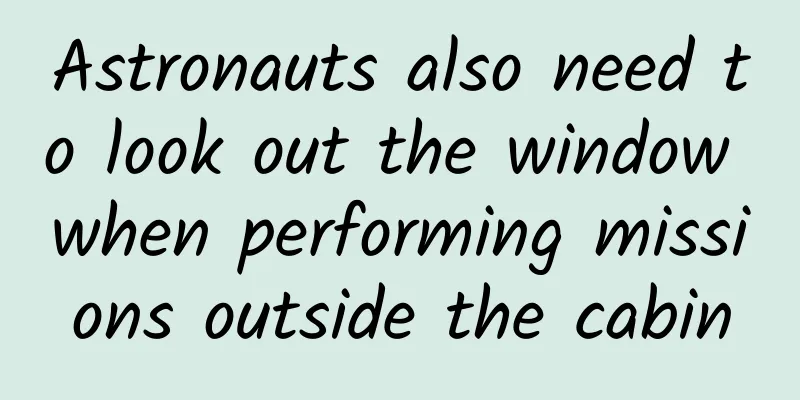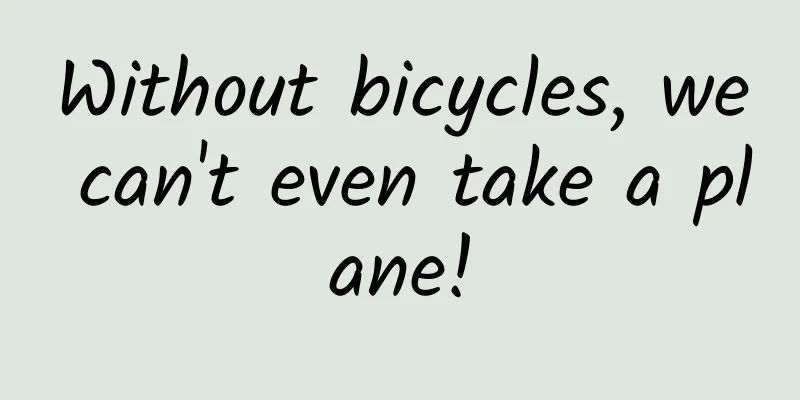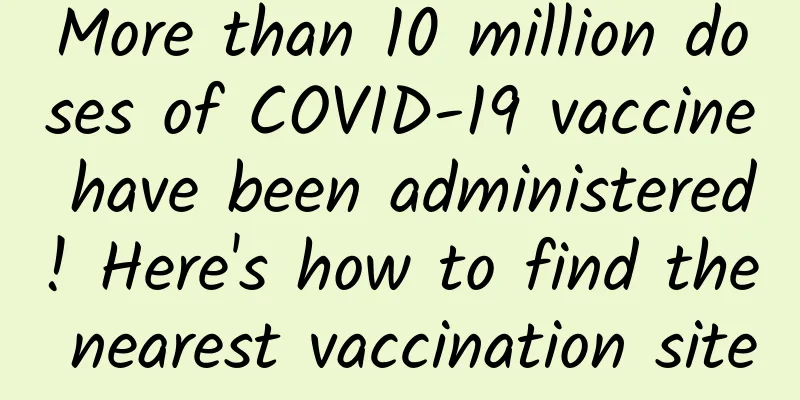Astronauts also need to look out the window when performing missions outside the cabin

|
On September 17, the Shenzhou XIV crew conducted the second EVA. Astronauts Chen Dong, Liu Yang, and Cai Xuzhe worked closely together to successfully complete the EVA for about 5 hours. During this time, they completed the installation of the EVA assist handle, the installation of the load circuit expansion pump set, and the EVA rescue verification. However, the space environment is very harsh. In order to ensure the safety of the astronauts and the successful completion of the mission, the timing and window of EVA must also be considered. The Shenzhou 14 astronaut crew conducts the second extravehicular activity Safety first, protection from radiation and debris The space environment is extremely harsh, with temperatures exceeding 120 degrees Celsius under sunlight and below -100 degrees Celsius in the shadows, and there are also threats from various space radiation. Astronauts going out of the cabin is a very risky activity, and the first thing to consider when choosing the window period for going out of the cabin is the impact of space radiation on the astronauts' health. Although the existence of the Earth's magnetic field and the Van Allen radiation belts blocks most of the high-energy radiation, the distribution of the Earth's magnetic field is not uniform. There are magnetic anomaly zones all over the world. The largest of these is located in the South Atlantic and southern Brazil, where the magnetic field intensity is much weaker than in other parts of the world. Above the South Pacific negative geomagnetic anomaly zone, the inner radiation belt of the Van Allen belt is very low, reaching as low as about 200 kilometers. This causes low-orbit spacecraft to be subjected to more high-energy radiation above this area. Therefore, this area is called the South Atlantic Radiation Anomaly Zone. At present, before astronauts on the International Space Station and my country's space station go out of the spacecraft, the first time window they consider is the impact of the South Atlantic radiation anomaly zone on their bodies. They try to minimize the time spent in the South Atlantic radiation anomaly zone during extravehicular activities. Therefore, ground staff will evaluate the astronauts based on the cumulative amount of radiation they are exposed to during their extravehicular activities and rationally plan the extravehicular time period. In addition, geomagnetic storms caused by strong solar flare activities can also cause changes in the Van Allen radiation belts. The high-energy protons ejected by the sun can penetrate deep into the Earth's magnetic field and cause serious radiation damage to astronauts. Therefore, astronauts need to choose the time window based on space environment forecasts, comprehensively consider space environmental factors, and combine the radiation shielding capabilities of extravehicular space suits when leaving the cabin. In addition, with the increase of human space activities, there are more and more space debris in the Earth's orbit, plus natural micrometeorites, astronauts must also consider avoiding these uninvited guests from outer space when they go out of the cabin. Therefore, the ground control center will make collision predictions based on the orbital target data monitored by the space monitoring network and the orbital parameters of the space station, and choose a time period when there will be no collision warning for astronauts to go out of the cabin to perform their missions. Power supply and sunlight angle are important At present, the electricity used by manned spacecraft and space stations comes from solar panels. The solar altitude angle is constantly changing depending on the orbital altitude, inclination and solar movement. The solar panels with a limited rotation range will cause unstable power supply due to the limitation of the solar incidence angle, which is also an important factor restricting astronauts from leaving the cabin. In 2008, my country's Shenzhou VII manned spacecraft was launched on September 25, instead of October like Shenzhou V and Shenzhou VI. One important reason for this was that after the spacecraft was launched into orbit at the end of September that year, the angle between the solar panels installed on the spacecraft and the sun was more suitable for astronauts to exit the cabin. The solar panels of the Shenzhou spacecraft can only rotate with a limited single degree of freedom, while the solar panels installed in various modules of the Chinese space station are much more flexible. Even so, during the flight of the Tianhe core module, considering the safety of the large robotic arm's extravehicular movement path, the solar panels were set to a vertical zero state during the astronauts' extravehicular activities, which means that the solar panels no longer rotate day by day. At this time, the solar incidence angle will severely limit the power generation capacity of photovoltaic cells. The space station can only ensure sufficient power supply within the appropriate solar incidence angle range, which constitutes a restriction and constraint on astronauts' extravehicular activities. The extravehicular activities of astronauts on the International Space Station are basically not affected by the incident angle of sunlight on the solar panels. This does not mean that the design of the International Space Station is so advanced, but that the space station either has many modules and various angles of solar panels, or the large dual-degree-of-freedom solar panels are far away from the pressurized modules and are less affected by extravehicular activities. Now, after the Tianhe core module and the Wentian laboratory module of China's space station docked in orbit, taking the second extravehicular activity of the "Shenzhou 14" mission as an example, since the astronauts only used the small robotic arm of the Wentian laboratory module, the solar panels of the core module did not need to consider the motion constraints of the large robotic arm and could rotate normally with the sun, thus ensuring the power supply of the core module. The Shenzhou 14 astronaut crew conducted their second extravehicular activity However, taking into account the safety of the small robotic arm's movement path and preventing it from blocking the relay satellite communication antenna, the solar panels of the Wentian laboratory cabin were set to zero horizontally and not rotate with the sun, which also restricted the power supply of the Wentian laboratory cabin. After the Mengtian laboratory module is launched into orbit and docked with the other two modules this year, the power of the three modules of the Chinese space station will be connected to the grid, and the windows for astronauts to exit the cabin will no longer be restricted by power supply. Space-ground communication is crucial for extravehicular support To ensure the telemetry and communication of manned spacecraft, the world's major space powers have established a complete ground telemetry and communication network. The emergence of modern tracking and data relay satellites has freed the measurement and control system from the limitations of geographical location and greatly expanded the orbital coverage. At present, the coverage of the U.S. manned space tracking and control network in low-Earth orbit exceeds 85%, and the coverage of my country's manned space tracking and control network is even higher. However, ground-to-ground communications are still affected by various severe weather conditions. For example, heavy rainfall has a strong impact on signal attenuation caused by rain. Astronauts will transmit video images and sounds in real time during their spacewalks, and each spacewalk can take several hours. Relay satellites are the main force in tracking and controlling capabilities and communication support. Once encountering severe weather such as heavy rain, the sound and image transmission of space-to-ground communications may be abnormal, and the spacewalks cannot be effectively supported. Therefore, ground weather is also an important factor affecting the time astronauts choose to spacewalk. Extravehicular activities are risky and require careful preparation and support from the ground and the space station. For astronauts, the day and night cycle outside the space station changes approximately every 90 minutes, but taking into account the work and rest time of astronauts and ground staff, the work and rest system synchronized with the earth and the sky is still adopted. In this way, taking into account the normal working hours and physical condition of ground staff, astronauts' extravehicular activities will be arranged during the day as much as possible, with the aim of ensuring that ground staff can support astronauts in performing their extravehicular missions in the best condition. In addition, there is no gravity in the Earth's orbit, and astronauts' extravehicular activities may seem easy, but in fact, they consume a lot of physical strength and energy. Their physical condition is also a factor that restricts the extravehicular window. Only when the astronauts are in the best physical condition will they be arranged to carry out extravehicular activities. (Author: Zhang Xuesong) |
<<: When this flower blooms, it reminds you that it’s time for dinner.
Recommend
How to create a high-authority account on Douyin? A guide to developing a high-authority account on Douyin
Everyone knows that Douyin accounts are divided i...
Tesla to make biggest product transformation in history to capture Chinese users
When in Rome, do as the Romans do is a tradition ...
This artificial gas was once used to develop nuclear weapons, but now exists all around you
Audit expert: Gan Qiang Lecturer at Beijing Insti...
A small project that can earn you hundreds of dollars in 2 hours a day. It is easy to understand.
A small project that can earn you hundreds of dol...
YunOS adds power to the A380 with outstanding highlights
The emergence and popularization of smartphones h...
Does overdue mortgage repayment have a big impact? Will it be reflected in the credit report if it is overdue for one day?
Because we are currently in the midst of an epide...
Use these 4 dimensions to optimize the information flow of 3 major industries and kill everything in seconds!
As people's behavioral habits gradually move ...
In order to prevent the bird from being "reckless", do this now
Birds are the most common "animal neighbors&...
Information flow advertising: budget 400, keywords 2W+, how to promote?
This week, the editor has sorted out several diff...
7 Tips to Reduce Customer Acquisition Costs for Facebook Ads
Customer acquisition requires a solid understandi...
Behind the Cola Wars: Yuanqi Forest has reached a crossroads
During the May Day holiday this year, I, who had ...
Human body science: Why do girls’ breasts become soft and hard at times?
Follow "Body Code Decoding Bureau" (pub...
Bidding promotion plan for the wedding photography industry!
1. Overview of the wedding photography industry b...
ROM Features Comparison
In addition to the rich applications that smartpho...
"China's Compound Eye" makes another big move!
Will an asteroid hit the Earth? How to observe th...

![[Smart Farmers] Although “earthy”, “rich”, protecting the world in the soil](/upload/images/67f242f10c06a.webp)







